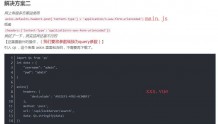Learn spring boot logging configuration via application.yml file in simple and easy to follow instructions. In the default structure of a Spring Boot web application, you can locate the application.yml file under the resources folder.
Table of ContentsUnderstand default spring boot loggingSet logging levelSet logging patternSet logging output to fileUsing active profiles to load environment specific logging configurationColor-coded logging output
Understand default spring boot logging
To understand default spring boot logging, lets put logs in spring boot hello world example. Just to mention, there is no logging related configuration in application.yml file. If you see any configuration in downloaded application, please remove it.
private final Logger LOGGER = LoggerFactory.getLogger(this.getClass()); @RequestMapping("/") public String home(Map<String, Object> model) { LOGGER.debug("This is a debug message"); LOGGER.info("This is an info message"); LOGGER.warn("This is a warn message"); LOGGER.error("This is an error message"); model.put("message", "HowToDoInJava Reader !!"); return "index"; } |
Start the application. Access application at browser and verify log messages in console.
2017-03-02 23:33:51.318 INFO 3060 --- [nio-8080-exec-1] c.h.app.controller.IndexController : info log statement printed 2017-03-02 23:33:51.319 WARN 3060 --- [nio-8080-exec-1] c.h.app.controller.IndexController : warn log statement printed 2017-03-02 23:33:51.319 ERROR 3060 --- [nio-8080-exec-1] c.h.app.controller.IndexController : error log statement printed |
Note down the observation that Default logging level is INFO – because debug log message is not present.
There is fixed default log message pattern which is configured in different base configuration files.
%clr{%d{yyyy-MM-dd HH:mm:ss.SSS}}{faint} %clr{${LOG_LEVEL_PATTERN}} %clr{${sys:PID}}{magenta} %clr{---}{faint} %clr{[%15.15t]}{faint} %clr{%-40.40c{1.}}{cyan} %clr{:}{faint} %m%n${sys:LOG_EXCEPTION_CONVERSION_WORD} |
The above pattern print these listed log message parts with respective color coding applied:
- Date and Time — Millisecond precision.
- Log Level — ERROR, WARN, INFO, DEBUG or TRACE.
- Process ID.
- A — separator to distinguish the start of actual log messages.
- Thread name — Enclosed in square brackets (may be truncated for console output).
- Logger name — This is usually the source class name (often abbreviated).
- The log message
Set logging level
When a message is logged via a Logger it is logged with a certain log level. In the application.yml file, you can define log levels of Spring Boot loggers, application loggers, Hibernate loggers, Thymeleaf loggers, and more. To set the logging level for any logger, add keys starting with logging.level.
Logging level can be one of one of TRACE, DEBUG, INFO, WARN, ERROR, FATAL, OFF. The root logger can be configured using logging.level.root.
logging: level: root: ERROR org.springframework.web: ERROR com.howtodoinjava: DEBUG org.hibernate: ERROR |
In above configuration, I upgraded log level for application classes to DEBUG (from default INFO). Now observe the logs:
2017-03-02 23:57:14.966 DEBUG 4092 --- [nio-8080-exec-1] c.h.app.controller.IndexController : debug log statement printed 2017-03-02 23:57:14.967 INFO 4092 --- [nio-8080-exec-1] c.h.app.controller.IndexController : info log statement printed 2017-03-02 23:57:14.967 WARN 4092 --- [nio-8080-exec-1] c.h.app.controller.IndexController : warn log statement printed 2017-03-02 23:57:14.967 ERROR 4092 --- [nio-8080-exec-1] c.h.app.controller.IndexController : error log statement printed |
Set logging pattern
To change the loging patterns, use logging.pattern.console and logging.pattern.file keys.
logging: pattern: console: %d{yyyy-MM-dd HH:mm:ss} - %msg%n file: %d{yyyy-MM-dd HH:mm:ss} [%thread] %-5level %logger{36} - %msg%n |
After changing console logging pattern in application, log statements are printed as below:
2017-03-03 12:59:13 - This is a debug message 2017-03-03 12:59:13 - This is an info message 2017-03-03 12:59:13 - This is a warn message 2017-03-03 12:59:13 - This is an error message |
Set logging output to file
To print the logs in file, use logging.file or logging.path key.
logging: file: /logs/application-debug.log |
Verify the logs in file.
2017-03-03 13:02:50.608 DEBUG 10424 --- [http-nio-8080-exec-1] c.h.app.controller.IndexController : This is a debug message 2017-03-03 13:02:50.608 INFO 10424 --- [http-nio-8080-exec-1] c.h.app.controller.IndexController : This is an info message 2017-03-03 13:02:50.608 WARN 10424 --- [http-nio-8080-exec-1] c.h.app.controller.IndexController : This is a warn message 2017-03-03 13:02:50.609 ERROR 10424 --- [http-nio-8080-exec-1] c.h.app.controller.IndexController : This is an error message |
Using active profiles to load environment specific logging configuration
It is desirable to have multiple configurations for any application – where each configuration is specific to a particular runtime environment. In spring boot, you can achieve this by creating multiple application-{profile}.yml files in same location as application.yml file.
Profile specific keys always override the non-profile specific ones. If several profiles are specified, a last wins strategy applies.
If I have two environments for my application i.e. prod and dev. Then I will create two profile specific yml files.
application-dev.yml
logging: file: logs/application-debug.log pattern: console: "%d %-5level %logger : %msg%n" file: "%d %-5level [%thread] %logger : %msg%n" level: org.springframework.web: ERROR com.howtodoinjava: DEBUG org.hibernate: ERROR |
application-prod.yml
logging: file: logs/application-debug.log pattern: console: "%d %-5level %logger : %msg%n" file: "%d %-5level [%thread] %logger : %msg%n" level: org.springframework.web: ERROR com.howtodoinjava: INFO org.hibernate: ERROR |
To supply profile information to application, key spring.profiles.active is passed to runtime.
$ java -jar -Dspring.profiles.active=prod spring-boot-demo.jar |
Color-coded logging output
If your terminal supports ANSI, color output will be used to aid readability. You can set spring.output.ansi.enabled value to either ALWAYS, NEVER or DETECT.
spring: output: ansi: enabled: DETECT |
Color coding is configured using the %clr conversion word. In its simplest form the converter will color the output according to the log level.
FATAL and ERROR – Red
WARN – Yellow
INFO, DEBUG and TRACE – Green
Drop me your questions in comments section.
Happy Learning !!
References:
Spring Boot – How to logging
Spring boot features – Logging






